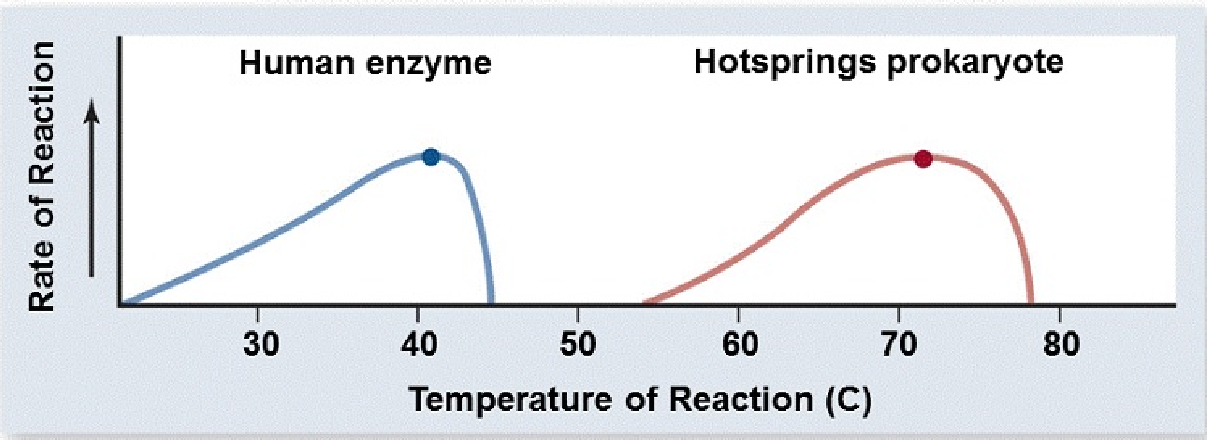Adjacent water molecules are connected by the ________.
A) sharing of electrons between the hydrogen of one water molecule and the oxygen of another water molecule
B) electrical attraction between the hydrogen of one water molecule and the oxygen of another water molecule
C) sharing of electrons between adjacent oxygen molecules
D) electrical attraction between the hydrogen atoms of adjacent water molecules
Ans: B) electrical attraction between the hydrogen of one water molecule and the oxygen of another water molecule
You might also like to view...
Based on the graph, what are the optimal temperatures for the human enzyme and hotsprings prokaryote enzyme?

A. The optimal temperature for the human enzyme is 30 degrees C. The optimal temperature for the hotsprings prokaryote enzyme is 60 degrees C.
B. The optimal temperature for the human enzyme is 40 degrees C. The optimal temperature for the hotsprings prokaryote enzyme is 72 degrees C.
C. The optimal temperature for the human enzyme is 46 degrees C. The optimal temperature for the hotsprings prokaryote enzyme is 79 degrees C.
D. The optimal temperature for the human enzyme is 35 degrees C. The optimal temperature for the hotsprings prokaryote enzyme is 65 degrees C.
Which statement is TRUE regarding the ecological role of plant degradation by fungi?
A) In brown rot the cellulose is attacked preferentially, and the lignin is left unmetabolized. B) In brown rot the lignin is attacked preferentially, and the cellulose is left unmetabolized. C) In white rot the cellulose is attacked preferentially, and the lignin is left unmetabolized. D) In white rot the lignin is attacked preferentially, and the cellulose is left unmetabolized.
All EXCEPT which one of the following are the
reasons for the rapid population explosion of humans? a. increases in carrying capacity b. expansion into new habitats c. removal of limiting factors d. reproduction occurring earlier in the life cycle e. None of these
Which feature would exclude a newly discovered organism from being categorized as a protist?
A. Having cellulose cell walls B. The absence of a nuclear envelope C. Lacking functional mitochondria D. Using pseudupodia for locomotion